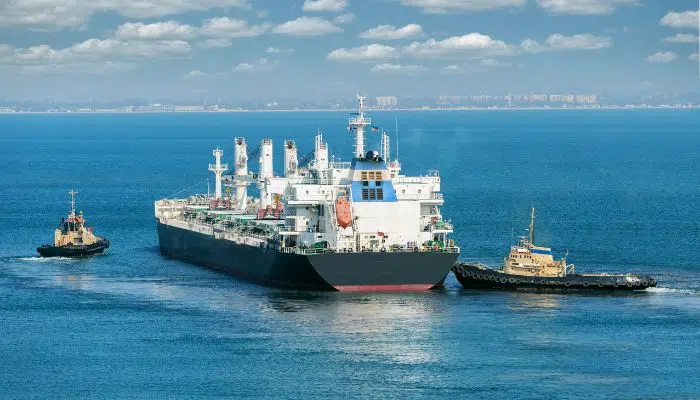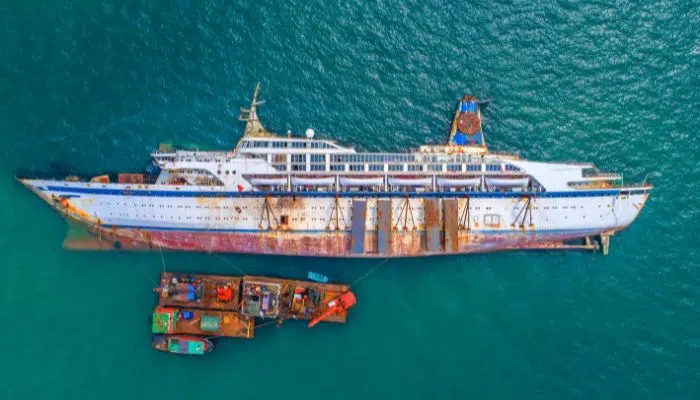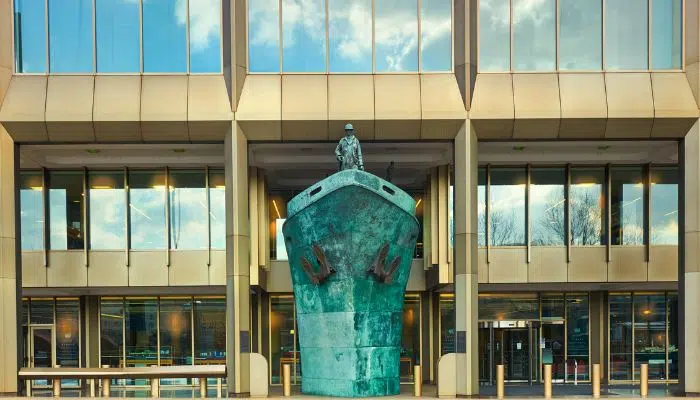Understanding Maritime Towage And Salvage
12/05/2023When a car breaks down, we call the towing company to have it towed away, moved to a safe place or workshop, and have it repaired. This is quite normal when the mode of transport is over land, though uncommon for heavy vehicles because of their size and difficulty in towing (in such cases, a mechanic and parts to be used for the repair are usually brought to the site of breakdown).
What happens when a boat on the water or a large tanker or cruise ship has a breakdown that it is not even able to limp to the nearest port? What happens in the case of serious accidents to such vessels while on the high seas or the harbour?
What is Towage?
In the maritime industry, towage refers to the moving of a stricken vessel with the aid of another, usually a powerful tug or towboat. A stricken vessel is one that cannot move using its own power and therefore needs assistance from a towing vessel. It may have had a breakdown, got stranded on the seafloor, run out of fuel, or met with an accident.

Such vessels have to be moved quickly as they may be lying on a busy shipping channel or could be in danger of leaking some contaminant into the sea if left unattended. For example, leaked fuel or heavy metal may cause irreversible damage to the ecosystem around.
Tugboats or Tugs
Tugs or tow boats are essentially the same. They are specifically designed for the purpose of pushing or pulling a stricken vessel. They are also called pusher crafts or pushers by the industry. Tugboats are easily noticeable by their squat shapes, rounded or flat bows, and tires or rubber fenders around the sides.
Such vessels are used to move boats, very large ships, or barges. Barges are large floating platforms used to transport goods, and these platforms are normally moved using tugboats.
When large vessels have to be berthed in their respective slots at a port, tugs are used for their gentle and precise positioning. Without guidance and assistance from tugs, modern mammoth vessels cannot berth safely on their own using their own power. Similarly, ships are moved out of their berthing slots using tugs or tow boats that take them safely to their respective channels for onward sailing.
Steam-powered boats were used for towage in the English harbours during the first half of the 1700s. Modern tug boats using powerful diesel engines had their origin in the early 1900s.
With speeds ranging up to 20 knots, powerful tugboats have bollard pulls between 340 and 477 tons. Some have highly advanced ROVs (Remotely Operated Vehicles) on board to help with rescue and salvage operations.
Boats and ships ply the high seas, rivers, lakes, and crisscross harbours. Tugboats are used to tow such a vessel in the event of an accident. Tugs that go into the sea are also used for salvage operations on high seas. A tug’s captain and his small team should have the skill and experience to safely manoeuvre vessels of all shapes and sizes along restricted waterways without causing any environmental disturbance.
Sometimes, tugs also serve as supply vessels for ships. Shipping companies enter into towage contracts with towing companies to take care of situations both routine and unforeseen.
From towage, let us now move on to salvage.
Salvage
Towage and salvage are two entirely different operations, and they cannot happen side by side. While towage can be generally viewed as the rescue, salvage is the retrieval of what is left after an accident.
Marine salvage is usually carried out after a casualty to a large boat or ship that has rendered it beyond towing. A vessel may be partially or completely damaged as a result of an explosion or fire onboard or due to a collision. Salvage could be to recover the vessel or the vessel as well as its cargo. Salvage companies have salvage vessels manned by dedicated crews and carrying special salvage equipment for use in such operations.

Depending on circumstances, it may be decided to refloat a wrecked or partially sunken vessel, perhaps repair it, or have it towed to the nearest port. Just refloating and towing alone will not do the job. If the ship is carrying contaminants or other toxic agents that are in danger of leakage, they have to be contained first and later disposed of properly. Marine salvage also involves retrieving cargo carried onboard a vessel before it is completely damaged by fire or seawater.
The normal practice after a marine accident is to draw a salvage contract between the shipping company whose vessel is involved in the accident and the salvage company. This would rule out any ambiguities at a later point in time and bring out a clear understanding of what is expected of the salvage company to minimise loss to its client while safeguarding its own interest.
In earlier times, it was common for passing vessels to assist in the salvage of a stricken vessel and then stake a reward for providing assistance.
International Maritime Organization (IMO) and Salvage Convention 1989
Salvors are those engaged in salvaging ships or the cargo that it carries. A 1910 marine convention held at Brussels on salvage provided rewards to salvors only upon successful completion of a salvage operation (“No Cure, No pay” principle). This principle often resulted in those who wanted to help to turn a blind eye to a marine accident as they were not sure of getting paid for their efforts.
In most cases, such a situation caused pollution or contamination of the surrounding environment from the wreckage of a ship. To set this right, the International Maritime Organization’s (IMO) Salvage Convention of 1989 brought about changes that would incentivise salvors to step in and act to prevent further damage to a stricken vessel, its cargo, and, therefore, the nearby environment.

The Salvage Convention of 1989 provides for salvage rewards taking into account a salvage crew’s skills and efforts in preventing or containing environmental damage as a result of a marine accident. This special reward that is assessed by an arbitrator or tribunal is to be paid to salvors who have not been paid for their efforts at salvage.
It would include expenses incurred for the salvage plus 30% of these expenses if the efforts resulted in preventing or minimising environmental pollution as a result of the accident. The reward may be scaled up to 100% of the salvor’s expenses by the assessing authority if it is found that the salvor had acted in a conscientious and responsible manner to avoid such pollution or contamination.
However, if negligence on the part of the salvor resulted in environmental damage, it can result in no special reward.
The salvage convention of 1989 was adopted on 28 April 1989 and came into force on 14 July 1996.
Towage, as well as salvage, are important aspects of the maritime industry as they prevent or minimise loss to shipping companies. From another and more important global perspective, timely interventions can prevent environmental disasters or at least reduce their intensity.
Source: Marine Insight


